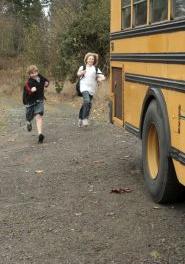Safeguarding students should be paramount within the education system. As stated in KCSIE 2023, safeguarding is everyone’s responsibility. Robust and stringent measures need to be implemented to ensure everyone involved in a school environment is protected and secured.
Jonathan Keay, Senior HMI stated:
“Having a safe, calm, orderly and positive environment in the school is not just about creating the right place for pupils to behave well and to learn well, it’s about creating somewhere of course that they want to come to in the first place.”
Students need to feel safe when attending school so they can focus on their education and have positive experiences with their friends and peers. Let’s take a look at five ways you can improve the safeguarding aspect of your school.
1. Build strong relationships and partnerships
Make sure all departments within the school are communicating fluidly so everyone understands policies, procedures and what should be expected. This can ensure a holistic approach to safeguarding within your school.
It’s also important to focus on building better relationships with parents. This can allow further collaboration and engagement to meet certain safeguarding standards and expectations.
2. Using technology for enhanced safeguarding
Technology can play an important role in improving the safeguarding of your school. Make sure to have robust cybersecurity measures to protect from external threats and cyberbullying. In addition to this, it can also be useful to have tracking and monitoring systems in place to assess student online activity, identify potential risks and ensure students are safe when roaming around the school.
3. Create an open communication culture
Creating a positive environment can allow students to feel confident in their school surroundings. Creating safe spaces, having open-door policies and having regular check-ins with students, can allow them to communicate anything that concerns them. Students can also find it easier to report incidents without fear of judgment or repercussions.
4. Providing valuable solutions
Not every child will attend school, however, it is still a school’s responsibility to ensure that whatever provision chosen has effective safeguarding protocols. There are effective methods, such as online alternative provisions, like EDClass, that treat safeguarding in the highest regard. Online and hybrid learning can be highly effective for some children in a safe and controlled manner. Make sure to conduct due diligence and assess the beneficial factors for the child and the school.
5. Continuously evaluate and improve
We must also continuously evaluate and improve the safeguarding measures integrated to ensure they are optimised and effective. You can do this by having regular audits to identify areas for improvement. Alternatively, you can open a feedback approach where staff and students can voice their opinions on safeguarding measures in the school so any weaknesses can be rectified.
You can also embrace continuous learning to ensure you are staying up-to-date with the latest safeguarding policies and procedures. You can do this by taking online courses or exploring training opportunities.
Take a look at this online course about safeguarding children in practice and other online safeguarding courses on Keys to Safeguarding you may find interesting.









